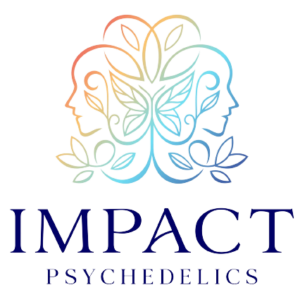Unlocking the Full Potential of Ketamine Therapy: The Transformative Power of Intention Setting
The world of mental health and wellness is constantly evolving with new approaches and strategies to help people combat various forms of mental illnesses. One such approach that has been gaining popularity in recent years is ketamine therapy, a form of treatment that uses a dissociative drug to enhance the mind-body connection and create an altered state of consciousness.
However, beyond the traditional components of this therapy lies a powerful tool that can further enhance its effectiveness: intention setting. Setting intention is a crucial aspect of mental health treatment that can help individuals channel their thoughts and emotions towards achieving their desired outcomes.
In this blog, we will explore the power of ketamine intention setting and how it can help individuals to experience greater mental clarity, emotional balance, and overall well-being.
1. The Basics of Ketamine Therapy
Ketamine therapy has been gaining popularity in recent years as a groundbreaking treatment for depression, anxiety, and PTSD. This powerful drug works by rewiring the brain’s neural pathways, allowing patients to experience profound changes in their thoughts, emotions, and behaviors.
But what exactly is ketamine therapy, and how does it work? At its core, ketamine therapy involves the administration of small doses of ketamine, a dissociative anesthetic commonly used as a painkiller. Unlike traditional antidepressants that take weeks or even months to take effect, ketamine therapy provides almost instant relief from symptoms, with many patients reporting improvements within hours of the first treatment.
The way ketamine works is still not fully understood, but researchers believe that it triggers a cascade of chemical reactions in the brain that lead to the growth of new neural connections. This process, known as neuroplasticity, is thought to be responsible for the transformative effects of ketamine therapy.
Despite its success, ketamine therapy can be challenging for some patients to navigate. It’s a deeply introspective experience that requires a certain level of mental fortitude and openness to change.
To get the most out of ketamine therapy, it’s crucial to set clear intentions and be open to the possibilities that lie ahead. In the next section, we’ll explore the role intention setting plays in unlocking the full potential of the psychedelic experience.
We’ll look at how to set intentions, what to expect during a ketamine session, and how to integrate the insights gained from the experience into everyday life. So, sit tight and let’s explore this fascinating world of ketamine therapy together.
2. How Intention Setting Enhances Outcomes
As modern science delves deeper into the healing benefits of ketamine therapy, new discoveries have emerged about the transformative power of intention setting. According to recent research, when patients enter into these sessions with clear, positive goals in mind, they’re more likely to experience deeper, more profound outcomes.
But what exactly do we mean by “intention setting”? Essentially, this refers to the process of clarifying your primary goals and aspirations for your psychedelic experience. Do you hope to alleviate anxiety and depression? Gain clarity and insight about your life’s purpose? Or perhaps you’re seeking relief from chronic pain or trauma? By identifying these objectives ahead of time and bringing them to the forefront of your mind, you free up valuable mental and emotional space to connect more fully with the therapeutic psychedelic experience.
In addition, intention setting can help boost the effectiveness of the psychedelic experience itself. With a clear goal in mind, patients are more likely to engage with the treatment, stay in the present moment, and allow themselves to surrender to the transformative effects of ketamine.
Whether you’re a long-time ketamine therapy patient or considering it for the first time, it’s worth exploring the potential of intention setting to unlock even greater benefits and breakthroughs. So, take some time to explore your own intentions and priorities, and see how this simple but powerful strategy can enhance your experience and amplify your results.
3. Understanding the Power of Intention
When it comes to harnessing the true potential of ketamine therapy, intention setting can prove to be a powerful tool. While ketamine has been proven to be extremely beneficial in treating an array of mental health conditions and disorders, the influence of intention can indeed make a significant difference in the outcome of the psychedelic experience.
What is intention, you might ask? Intention is the driving force that initiates the purpose of using ketamine therapy. It is crucial to understand that intention is not a goal, but rather an inner direction of where you want to be.
By setting intentions before starting ketamine therapy, you allow the power of the mind to positively influence your psychedelic experience. Intention setting helps in aligning your thoughts, emotions and actions towards the desired outcome.
Intention setting during ketamine therapy can be as simple as setting an intention to be present and open to what the experience brings or setting an intention to let go of past traumas and emotional blockages. The beauty of intention setting is that it allows you to find a deeper sense of intentionality and purpose to guide you towards a more positive and fulfilled life.
Setting intentions can also help in making the experience more comfortable and safe during ketamine therapy. When you have a clear intention in mind, any uncomfortable physical or emotional sensations that may arise during the therapy session can be more tolerable.
Rather than reacting to the discomfort, you can remain focused on your intended outcome, allowing your mind to build neural networks towards the desired state. Understanding the full power of intention can unlock the true potential of ketamine therapy and facilitate lasting transformation on both mental and emotional levels.
4. Setting Goals and Intentions for Therapy
Setting clear goals and intentions is a fundamental aspect of any effective therapy, and ketamine therapy is no exception. It’s important to have a clear understanding of what you hope to achieve through this transformative treatment in order to fully reap its benefits.
The beauty of ketamine therapy is that it can help you gain unprecedented insight into your own psyche, allowing you to more easily set and achieve your goals. During your ketamine therapy sessions, it’s important to focus your thoughts and energy on your goals and intentions.
This might mean visualizing yourself achieving your goals, or simply affirming your intentions through positive self-talk. You might even consider creating a set of affirmations or an intention statement to help guide your thoughts during your sessions.
It’s also important to approach your ketamine therapy with an open mind and heart, ready to receive whatever insights and healing come your way. Setting goals and intentions can help you stay focused and grounded during your treatment, but it’s equally important to let go of expectations and allow the transformative power of ketamine to work its magic.
By setting clear goals and intentions, you can unlock the full potential of ketamine therapy and create a truly life-changing experience. Whether you’re seeking relief from depression, anxiety, or other mental health challenges, ketamine therapy can be an incredible tool for achieving your goals and living your best life.
So take some time to reflect on your intentions and set yourself up for success – amazing things await!
5. Integrating Intention Into Therapy Sessions
While ketamine is already known for its ability to treat a range of mental health conditions such as depression, anxiety, and PTSD, intention setting amplifies its transformative power.
So what exactly is intention setting? It is the process of clarifying your goals and establishing a clear intention for your therapy session. By doing this, you not only come prepared with a purpose, but also create a mental pathway for your desired outcome.
Your intention could be anything from seeking clarity, overcoming a specific fear, or deepening your self-awareness. Intention setting before a ketamine therapy session sets the stage for a deeper and more focused experience.
It allows your mind to prepare for the psychedelic journey ahead and to work together with the ketamine to achieve your desired outcome. Without intention, the ketamine’s effects may not be as profound and transformative as they could be.
Integrating intention into ketamine therapy sessions is a simple and effective process. It involves setting aside some time before the session to reflect on what you hope to achieve and what you want to let go of.
By doing this, you create a container for your experience that is grounded in purpose and meaning. In summary, integrating intention into ketamine therapy sessions unlocks the transformative power of this powerful medicine.
It allows you to work collaboratively with the ketamine to achieve your desired outcome, leading to meaningful and lasting change in your life.
6. Techniques for Effective Intention Setting
Intention setting is a powerful technique that can help unlock the transformative potential of ketamine therapy. By setting clear intentions before undergoing a ketamine session, patients can focus their energy and attention on a specific outcome.
Whether it’s healing a past trauma, improving self-awareness or gaining insights into personal goals, intention setting can help patients get the most out of their ketamine therapy experience. One key aspect of effective intention setting is clarity.
Patients should take some time to reflect on what they hope to achieve through their ketamine therapy, and then distill their intention into a clear and concise statement. It’s important to avoid vague or overly broad intentions, as these can dilute the focus and effectiveness of the therapy.
Another important element of intention setting is emotional resonance. Patients should connect with the emotional core of their intention, feeling the importance and urgency of their desired outcome.
When our intentions are aligned with our deepest desires and authentic selves, we are more likely to experience profound transformation and healing through ketamine therapy. Finally, it’s important to remember that intention setting is an ongoing process, not a one-time event.
Patients should revisit their intentions regularly, checking in on their progress and refining their goals as needed. With consistent attention and focus, patients can access the full potential of ketamine therapy and experience lasting transformation and healing.
7. Creating A Personalized Intention Plan
Ketamine therapy is a revolutionary approach to treating mental health conditions with incredible potential. It is a powerful tool that can provide relief to individuals who have struggled for years with anxiety, depression, and other mental health issues.
However, to achieve the best results, one needs to have personalized intention plans. Creating a personalized intention plan before your ketamine therapy sessions is a vital step that can help you unlock the full potential of this transformative treatment.
It is essential to be intentional about your mindset when undergoing ketamine therapy. The intention setting process is a powerful tool that allows you to focus your mind on your goals and desires for the treatment.
With intention setting, you can prepare your mind to achieve the best results from ketamine therapy. It is about connecting with yourself, setting goals, and keeping a positive mindset.
By preparing for the treatment, you can approach it with a clear and focused mind, allowing for maximum healing and transformation. Creating a personalized intention plan involves several steps.
These include identifying your goals for the treatment, understanding your motivations, and determining your desired outcomes. You should also reflect on your current state of mind and how ketamine therapy can help you achieve the desired results.
To develop your personalized intention plan, you need to work with an experienced ketamine therapist who can guide you through the process. They will help you identify your goals, work with you to create intentional statements, and assist with maintaining your focus throughout the treatment.
In summary, creating a personalized intention plan is an essential part of unlocking the full potential of ketamine therapy. With the right mindset and focused intention, you can achieve incredible transformational results that will change your life for the better.
It is an investment in yourself that can positively impact your mental health and well-being for years to come.
8. Combining Intention With Other Therapies
When it comes to unlocking the full potential of ketamine therapy, there are a variety of strategies one can employ. One technique that is garnering a lot of attention lately is the use of intention setting.
Intention setting involves focusing one’s thoughts and energy on a particular outcome or goal, with the goal of helping to manifest that outcome in reality. While it may sound a bit woo-woo, there is actually a substantial body of research backing up the efficacy of intention setting, particularly when combined with other therapies.
For example, many ketamine clinics now offer guided meditation sessions or other mindfulness practices to help patients set powerful intentions prior to their ketamine infusion. By accessing a state of deep relaxation and mental focus, patients are better able to direct their intention towards specific therapeutic goals, such as alleviating depression or reducing anxiety.
In addition to guided meditations, some clinics also incorporate cognitive behavioral therapy (CBT) or other talk therapies into their ketamine treatment programs. By working with a therapist to identify and challenge negative thought patterns, patients can develop a greater sense of self-awareness and agency, which can in turn enhance the effectiveness of their intention setting practice.
Ultimately, the key to unlocking the full potential of ketamine therapy lies in creating a synergistic treatment plan that harnesses the power of intention in combination with other evidence-based therapies. By doing so, patients can more effectively tap into their innate ability to heal and transform, leading to long-lasting positive outcomes and a greater overall sense of well-being.
9. Navigating Challenges During Therapy
Entering into ketamine therapy to confront and overcome personal struggles can be a daunting experience. That’s why navigating the challenges that arise during therapy is an important aspect of ensuring successful treatment.
Often, these challenges can take the form of negative thoughts, emotions or physical sensations, which can be difficult to navigate without the right mindset and intention setting. The transformative power of intention setting is a key tool that can aid ketamine therapy patients to overcome these challenges.
By setting clear and positive intentions, patients can enter into therapy with a sense of purpose and direction, and remain focused throughout their psychedelic journey. This can include identifying the specific negative mindsets or behaviors they hope to overcome, or focusing on positive attributes they would like to cultivate in themselves.
Having a clear intention can also help to mitigate feelings of anxiety or uncertainty that may arise during therapy. By staying focused on these intentions, patients can more easily ride the ups and downs of the experience, and come out the other side feeling empowered and transformed.
As with any therapeutic approach, it’s important to work closely with your therapist to develop effective intention-setting strategies that work for your individual needs. Ultimately, unlocking the full potential of ketamine therapy requires a willingness to engage with the challenges that arise during treatment, and the fortitude to see them through to completion.
With the right mindset and intention setting, however, patients can emerge from therapy feeling stronger, more grounded and more resilient than ever before.
10. Maximizing the Transformative Potential of Ketamine Therapy
Unlocking the full potential of ketamine therapy goes beyond just administering the drug. It entails maximizing the transformative effects of the treatment through intentional setting.
Ketamine therapy is a powerful tool in the treatment of various mental health disorders, including depression, anxiety, and PTSD. However, the approach used during the therapy plays a significant role in its effectiveness.
Intention setting refers to the process of intentionally directing your mind towards a particular outcome. In the context of ketamine therapy, it involves setting intentions on what you want to achieve from the treatment.
This can vary from person to person and may include goals such as emotional healing, increased self-awareness, and a greater understanding of one’s mental health. The transformative power of intention setting lies in its ability to enhance the effects of ketamine therapy.
By setting intentions, you create a framework for your mind to follow during the treatment. This helps to focus your mind and allows you to direct your thoughts towards your goals.
When combined with ketamine’s therapeutic effects, intention setting can lead to profound changes in your mental health and wellbeing. Maximizing the transformative potential of ketamine therapy requires a holistic approach that incorporates intentional setting.
By setting intentions, you can unlock the full potential of ketamine therapy, and transform your life in ways you never imagined possible. So, if you’re considering ketamine therapy, remember to set your intentions and take control of your healing journey.
The Bottom Line
Ultimately, the power of intention setting in ketamine therapy cannot be ignored. By being mindful of what you want to achieve from your treatment and working with your clinicians to set clear, focused intentions, you can greatly enhance the benefits of this therapy for your mental health and wellbeing.
Whether you’re looking to overcome depression, anxiety, PTSD, or any other mental health challenge, setting an intention can help you stay focused, motivated, and optimistic throughout your psychedelic journey to recovery. So if you’re considering ketamine therapy, be sure to take the time to set clear, powerful intentions that align with your goals and aspirations.
With the right mindset and supportive care, ketamine therapy can be a life-changing experience that empowers you to reclaim your emotional wellness and live your best life.






